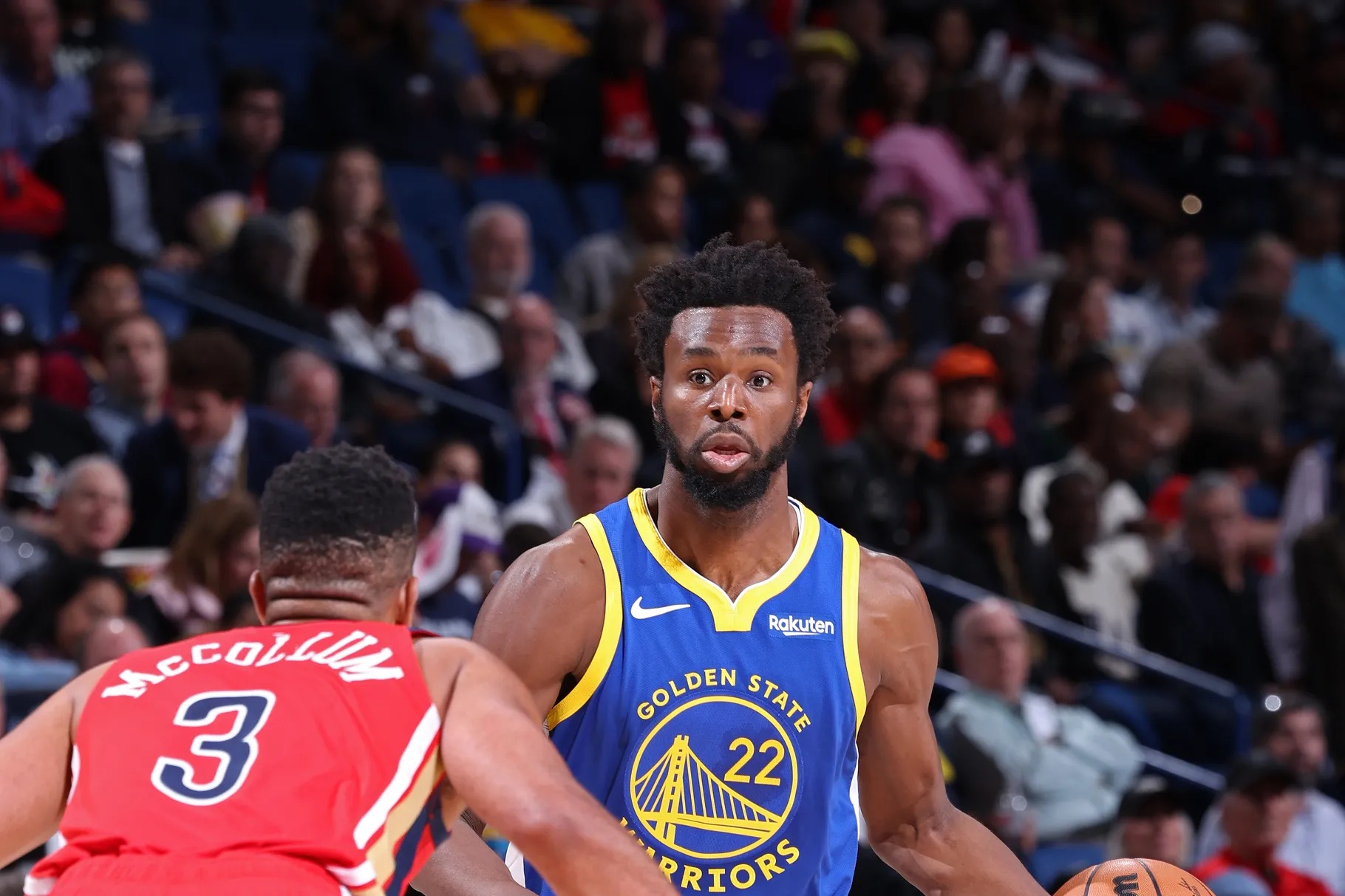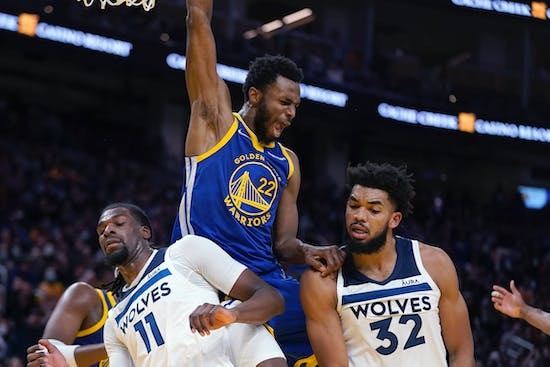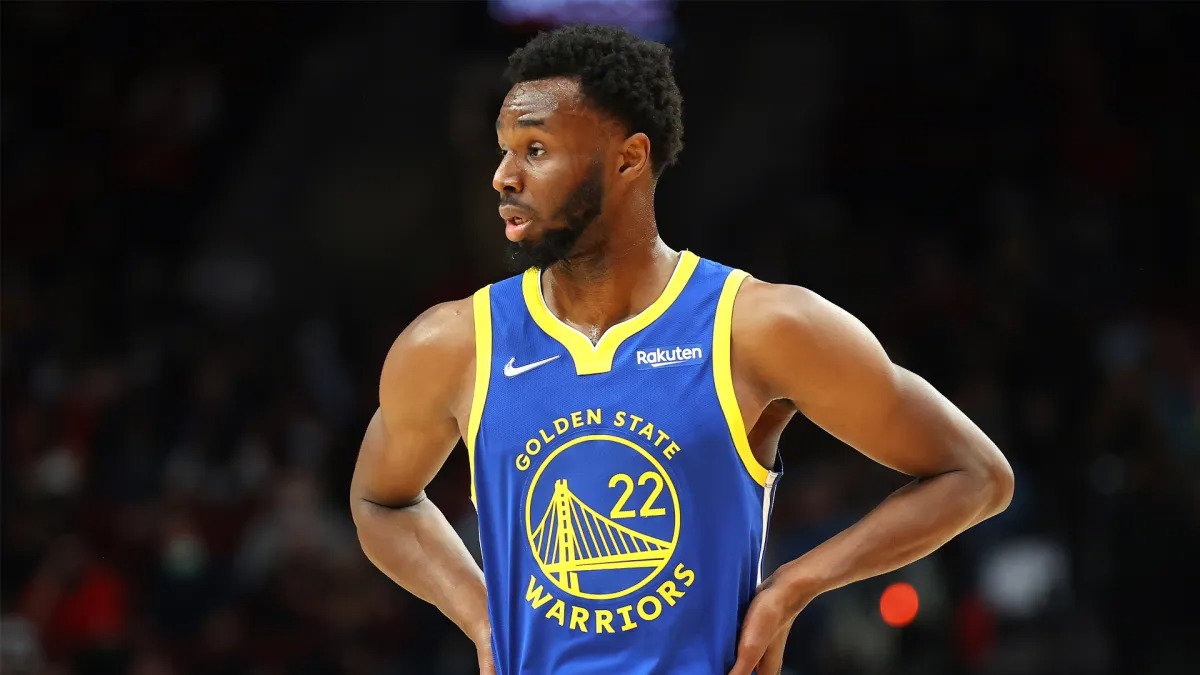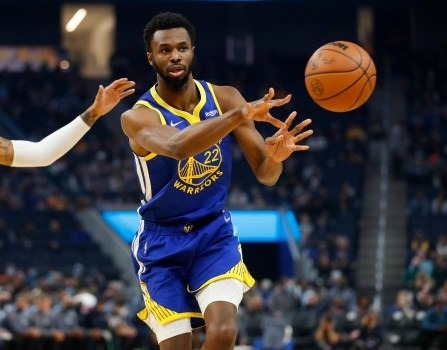The Golden State Warriors have played four games this year. If things go the way we are all hoping they’ll go, they have about 100 left to play. We’re still roughly eight months away from the start of the offseason. It is far too early to worry about anything offseason-related, and probably too early to even think about anything offseason-related.
But I want to anyway. Because while the Warriors staking their claim as one of the NBA’s elite, and Chris Paul fitting in seamlessly are the two biggest stories surrounding the team’s opening week, a third story has emerged in my eyes.
What does the future look like for Andrew Wiggins?
That’s not something we’ve had to think about much lately. Wiggins booked his first trip to the All-Star Game during a dynamic 2021-22 season, which featured truly sensational defense in the NBA Finals against Jayson Tatum, as Wiggins played a vital role in the Dubs winning the 2022 championship. Shortly after, he was rewarded with a four-year, $109 million extension that kicked in this season. There’s been no need to question his role with the team.

Until now.
Golden State’s shocking move to trade Jordan Poole for Chris Paul in June was in part to increase the team’s title chances this year, and it’s already abundantly clear that it has done exactly that. But there was a pretty important secondary reason for the trade: to clear cap space to help the team retain Klay Thompson, who is in the final year of his contract.
Poole has more than $95 million guaranteed to him after this season; Paul, on the other hand, has as much guaranteed money from the Warriors as you or I do.
So the math was always simple. The Dubs would acquire Paul, enjoy his services for a year, and then likely opt out of his fully non-guaranteed $30 million for 2023-24, making it easier to stomach the tax bill after agreeing to a new deal with Thompson.
But what if that money comes from clearing Wiggins’ contract instead of Paul’s?
On the surface it seems a crazy thought. Wiggins is a full 10 years younger than Paul, was, in most people’s eyes, the second-best player on the Warriors in the 2022 NBA Finals, and plays arguably the most important position in the NBA.

All of that is true. But so are these points: there’s a non-zero chance that Moses Moody is better than Wiggins; there’s a non-zero chance that Jonathan Kuminga is better than Wiggins; there’s a non-zero chance that both are better than Wiggins; and those chances are only increasing.
I don’t want to overreact to four games, though it’s worth pointing out just how grim those four games have been for Wiggins. Through 103 minutes, he has just nine rebounds — only one more than guard Brandin Podziemski, who made his NBA debut last night. He has seven turnovers to just three assists, and 11 fouls to just three blocks and zero steals. His defense has been bad and his offense has been worst.
Wiggins will get better; much better, in all likelihood. It’s only four games after all. But it is worth noting that he looked very poor in the preseason as well, struggling to impact the games on either end of the court, and tallying just 12 boards in 105 minutes. And last year, even before a family emergency sidetracked his season, Wiggins had clearly regressed from his breakout 2021-22.
But it takes two to tango, and you can’t get rid of a core part of your starting lineup without a contingency plan. Which brings us to Moody and Kuminga. The 2021 lottery picks — who had their fourth-year rookie options picked up on Tuesday — have taken a clear step forward. Preseason gave us reason for optimism, and the first week of the season has cemented it. They’ve both become core parts of the rotation, and given their age — Kuminga turned 21 a few weeks ago, and Moody just a few months prior — we can expect them to steadily improve.

Coming into this year, Moody was best suited as a shooting guard and Kuminga limited to power forward, so they weren’t like-for-like comparisons with Wiggins. But Moody clearly hit the gym in the offseason and has shown the ability to bang with larger players: his defense on forwards has been strong this year, and he’s grabbed 12 rebounds in 77 minutes despite playing on the perimeter. And Kuminga has improved his shooting and playmaking — counting preseason, he’s 13-for-30 from deep, and looks miles more comfortable shooting the ball than he did last year (when, it’s worth noting, he still made 37.0% of his threes).
I’m not yet ready to say that the Warriors would be a better team with Moody or Kuminga in the starting lineup — we need another month or two of them sustaining this growth, and Wiggins continuing to struggle. But the trend lines are pointing in stark enough opposition that it’s fair to wonder if, by the time the offseason rolls around, Moody and/or Kuminga might have surpassed Wiggins on the Dubs’ depth chart. Keep your eye on those closing lineups, folks.

If Paul is one and done with the Warriors, then the Wiggins situation can get kicked down the road for a year. Kuminga will only make $7.6 million next year, and Moody $5.8 million. But the day before the 2024-25 season begins is the deadline for Golden State to work out a rookie extension with either player, and if this year’s improved play is any indication, the Dubs will not only want to do that, but have to shell out a fair amount of money in the process. At that point, unless the team shockingly doesn’t agree to a deal with Thompson, something will have to give.
And if Paul continues to play the way he has for the first week? Well, I’m not sure how he can be one and done. He’s been the team’s clear-cut second-best player through four games, and looks closer to an All-Star than to a player driving down the final stretch of his career. If the Warriors come close to winning — or better yet do win — a title, with a dynamic bench unit led by Paul as one of the key reasons, will they have any desire to bid him farewell, especially with how seamlessly he’s gotten along with the team’s stars?
Absolutely not.
That doesn’t mean they’ll pick up his $30 million option. Golden State acquired Paul’s Bird rights in the trade with Washington, so they can work out a longer-term deal at a lower price, and perhaps line him up with the rest of the core on a three-year, $55 million deal, or something along those lines.
That’s not a ton of money, at least in NBA terms. But it is enough that Joe Lacob and Co. might be unwilling to pay it without finding some outgoing salary to offset it.
Which brings us back to Wiggins.
We’ve put the cart ahead of the horse at this point, but it’s never too early to think about roster construction. And as we do so, one question stands at the forefront: does the best team that the Warriors can build, using only the resources they’re willing to spend, still include Wiggins?